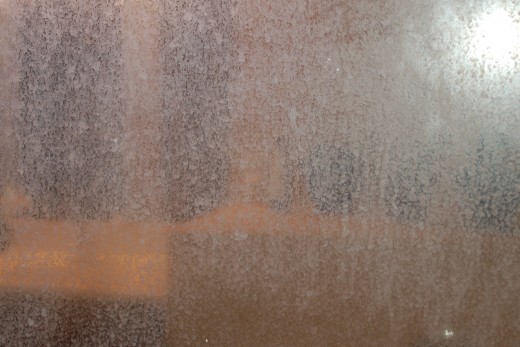If you live in a hard water area, you’ll be familiar with the problems caused by limescale. Once it has built up inside your kettle or shower head, limescale can be very difficult to remove. In severe cases can stop your electrical items working altogether. There are however some things you can try to keep on top of the problem.
What is limescale?
Tap water isn’t the same throughout the UK. The type of water which comes out of the taps varies according to the type of rocks in each area. Most of southern and eastern England from Yorkshire south and from Somerset east has water which contains a higher percentage of dissolved minerals such as calcium and magnesium than in Wales or Scotland. As the water evaporates, the hard minerals are left behind as limescale.

Limescale in itself is not dangerous and not harmful to health, but it does mean that you need more shampoo or soap powder to get a lather and that the build-up of scale inside irons, kettles or boilers can mean they don’t last as long as elsewhere in the UK.
Preventing Limescale
Short of moving to Scotland or Cornwall, there isn’t much you can do to stop limescale building up in the first place. Some people filter water for drinking or for boiling in the kettle and this will certainly help with smaller appliances. There are also larger water filters or water softening systems which you can have fitted to the mains pipe coming into your home which will remove or neutralise the mineral deposits from your water. Be aware that these cost several hundreds of pounds to buy and have fitted, plus an ongoing cost for maintenance. Furthermore, if you are living in a rented property, chances are that your landlord will not be prepared to meet the cost of fitting a filter system. There is therefore very little you can do to stop limescale accumulating in the first place.
Commercial Products
There are many companies selling limescale busting products which you can add to your washing machine or dishwasher and claim to help keep the limescale at bay. These are probably a good option if you live in a very hard water area. The shelves of any supermarket cleaning aisle are also full of trigger spray products to combat limescale and although these work, they can prove expensive when used over the long term. It’s also not always practical to fill your iron or kettle with expensive cleaners which are then tricky to remove.
By all means purchase a bathroom cleaning spray with an added anti-limescale component, but if the limescale has already built up, more drastic measures may be needed. Removing the limescale is a tricky job as it is so hard and “caked-on”, and scrubbing away at the mineral deposits may well mean you damage your taps or shower head even more.
Vinegar
One of the very best weapons in the fight against limescale is plain old vinegar. This is because, as you’ll remember from school science lessons, vinegar is an acid and limescale is an alkali. Put the two together, and they will neutralise each other. The vinegar dissolves away the limescale making cleaning far easier. You don’t need expensive branded vinegar for this task; the cheapest “value” brands will do the job perfectly.
In the kettle, pour enough vinegar in to cover the element then heat the kettle gently without letting it boil. Leave the vinegar overnight and rinse the kettle thoroughly before using.
If you have limescale clogging up your shower head either remove the head completely and soak it in a jug of vinegar overnight, or soak a face cloth in vinegar and then wrap it around the shower head, securing with an elastic band and plastic bag. Lemon juice – also an acid – will have a similar effect.
You can even make your own cleaning solution by mixing up some plain water with vinegar and lemon juice and using it in a trigger spray bottle for cleaning the bathroom. You can also help neutralise any limescale in your washing machine or dishwasher by putting a cup of vinegar or lemon juice into the detergent drawer and then running it through on empty.
Prevent limescale by following a regular bathroom cleaning routine.